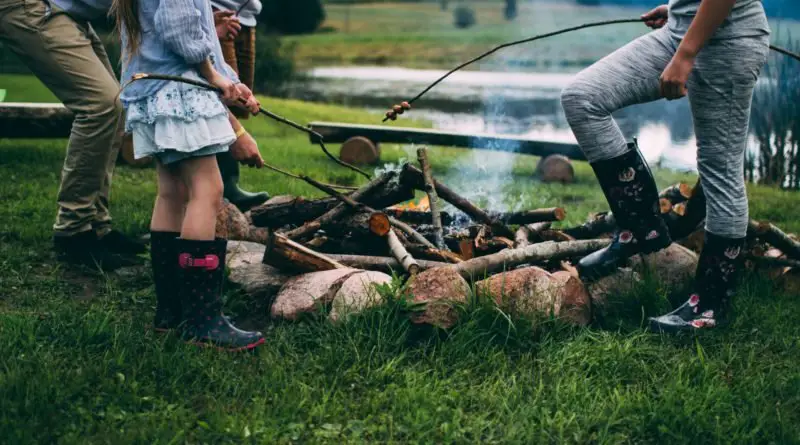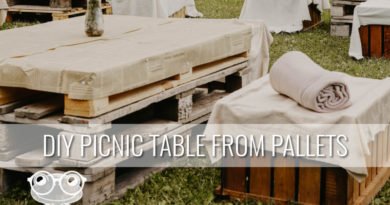Last modified on March 12th, 2022 at 10:22 am
4 Ways to Make Camping with Kids Safe and Fun
Camping is a staple tradition in many families. However, the global COVID-19 pandemic has forced many to keep their tents pitched in the backyard – rather than at their favorite campsite.
In order to keep people safe and socially distant, many national and state parks temporarily closed their gates to campers. However, as restrictions are being lifted, some parks are reopening and allowing people to finally plan their trips.
But many parents are wondering whether it is safe for them to take their kids on a family camping trip during a global pandemic. Beyond just the health concerns, many parents are questioning whether it will actually be any fun if they have to follow strict safety and health guidelines.
Well, we have got good news. As long as you and your family are following the recommended safety guidelines (like practicing social distancing, washing your hands thoroughly, and wearing masks in public spaces), camping can be a very safe – and still very fun – activity.
Here are four major tips to keep in mind as you plan your camping trip post-pandemic.
1. Be Prepared
Although many campgrounds are reopening, the threat of the virus is still quite high. You need to be doing all you can to ensure that you are prepared for any potential dangers. The CDC recommends that all children are up to date on their vaccinations before camping, particularly for tetanus, whooping cough, and meningitis.
Second, create an emergency kit to cover all of your bases in case anything should happen. A basic first aid kit for camping should include:
- Rubbing alcohol and hydrogen peroxide
- Bandages
- Pain medication
- Fever reducer
- Bug spray and insect bite treatments
- Tweezers
- Safety Pins
- Cleaning Wipes
- Sunburn treatment and sunscreen
- Allergy medication and EpiPen if needed
- Extra doses of prescription medication
- Hand sanitizer
- A box of face masks
Finding supplies on the trip may be difficult (remember how hard it was to find toilet paper at the beginning of quarantine?). Try to stock up on all of the supplies you need before you arrive at your campsite. You cannot rely on convenience stores to have everything you need.
You should also try to plan out your menu by creating a camping food list with meals that everyone will love – and with ingredients, you can store safely and easily. Food poisoning is one of the most common camping-related illnesses reported – as refrigeration is not always possible. It may be best to cook your food ahead of time or bring items that do not require cold temperatures (like raw meat or eggs).
2. Make Comfort and Cleanliness a Priority
Keeping things clean can be difficult while you are camping – but sanitization is super important right now. It is highly recommended that you bring your own cleaning supplies which are effective but also environmentally safe. Castile soap or diluted alcohol sprays are typically the best options.
Make sure you bring items which can be easily cleaned, and you wipe down all surfaces before, during, and after your camping trip. This includes tables, chairs, sporting equipment, and any fabrics like sleeping bags, clothes, and hammocks.
Now, there is no need to sacrifice comfort for cleanliness here.
You want to be sure that your trip is an enjoyable experience for everyone. For instance, inflatable sleeping pads can make sleeping in a tent far more comfortable. Plus, they can be easily washed with a cleaning spray and deflated for easy storage. Bringing a portable fan can also help everyone stay cool on hot nights when they are cramped into smaller spaces (and hopefully cover the sound of dad’s snoring).
3. Do Lots of Nature-Focused Activities
It is best to avoid places where large numbers of people gather right now.
While that is pretty easy to do when you are camping, there may be larger crowds than normal at popular destination spots these days. People are eager to get out of their house and go on vacation. Spots like hiking trails, swimming holes, or landmarks could be a bit crowded.
Instead, choose activities that can be done in wide open spaces – and are still fun for the whole family. For example, take the kayaks or a rowboat out to a large lake so you can spread out away from others while still spending quality time with the whole family. It could also be a great time to teach your kids new things, like how to fish or scavenge for food in the forest.
It is also best to keep everyone closer to your campsite area, rather than venturing off. Try to incorporate activities that will keep everyone entertained. Why not start a nature scavenger hunt or learn a new card game around the campfire?
4. When Possible, Bring Your Own Gear
Although some campsites offer equipment like grills and boats for rent, it is best that you bring your own so that you can be sure everything is safe and cleaned properly. Dangerous germs and viruses (like COVID-19) can survive on surfaces unless they are properly cleaned. So, for the time being, it is a good idea to bring your own stuff so you can be sure they are sanitary.
A list of items that you may want to bring yourself to avoid shared spaces include:
- Camping grill or stovetop
- Tables and chairs
- Sporting equipment (balls, baseball gloves, tennis rackets, etc.)
- Boats and lifejackets
- Portable camping showers or water for cleaning up
You may also want to consider purchasing or renting a camper or RV to keep your kids in a safer, more controlled environment.

Conclusion
Camping has been a time-honored tradition for many families – and it is still possible to have a fun trip even in the midst of a global pandemic. You need to be extra careful to ensure that everyone stays safe and healthy by paying more attention to cleanliness practices and taking extra precautions.
Author:
Kevin is a proud San Diegan originally from Iowa. He loves hiking, surfing, rock climbing, and experiencing the outdoors in as many ways as possible. His love of exploring and writing motivated him to start Impulsive Wanderlust – a travel + leisure blog providing recommendations to travelers around the world.




